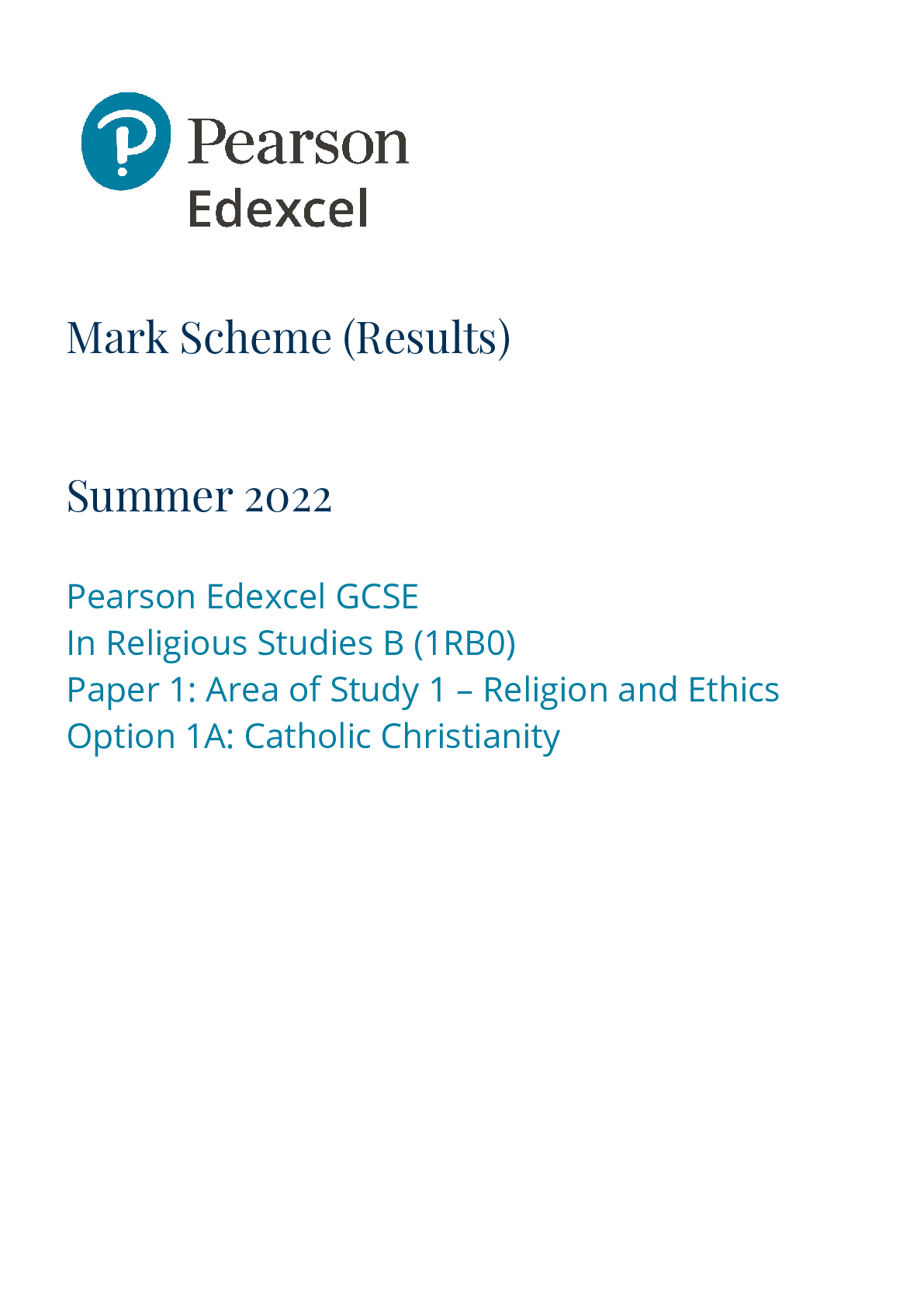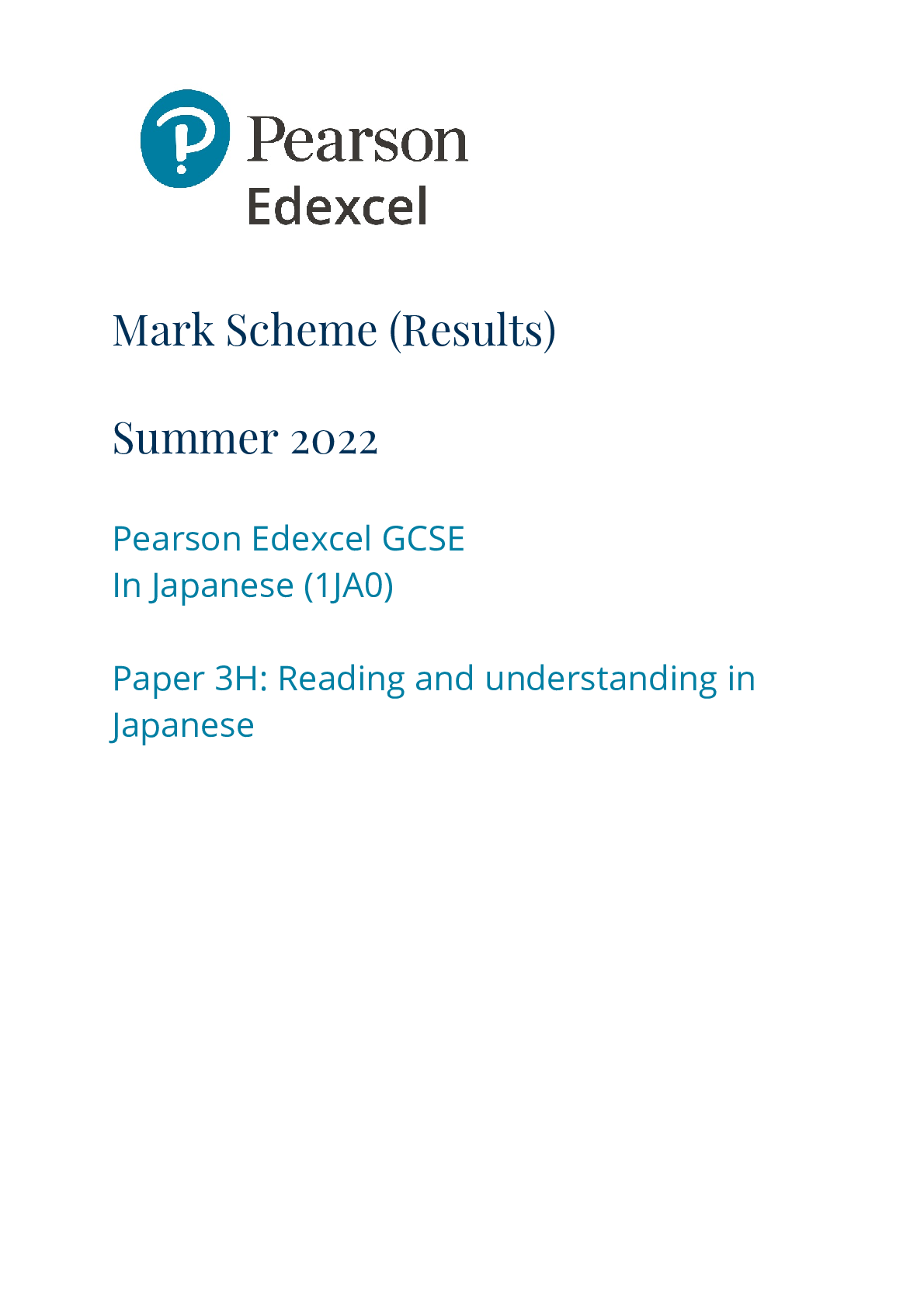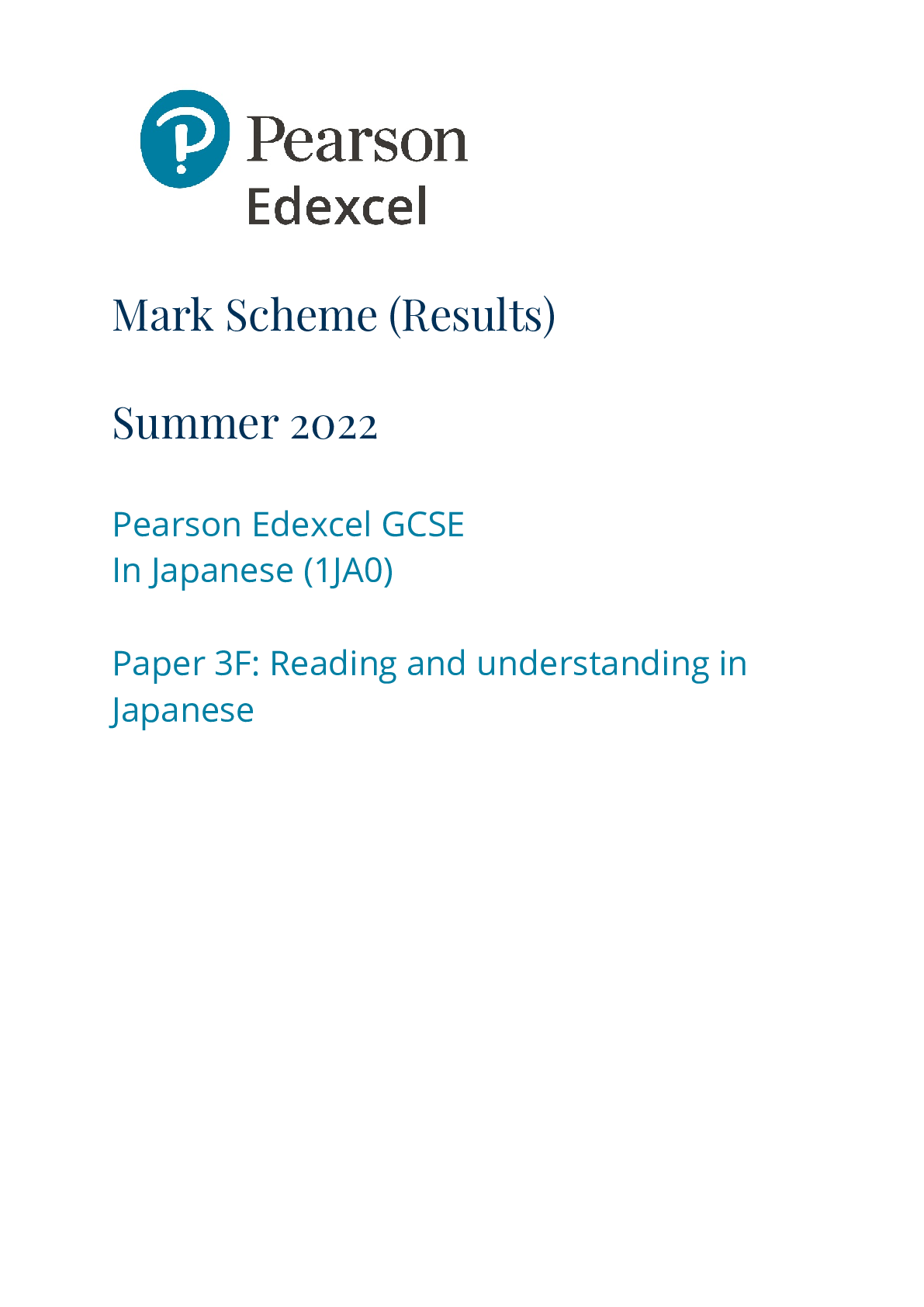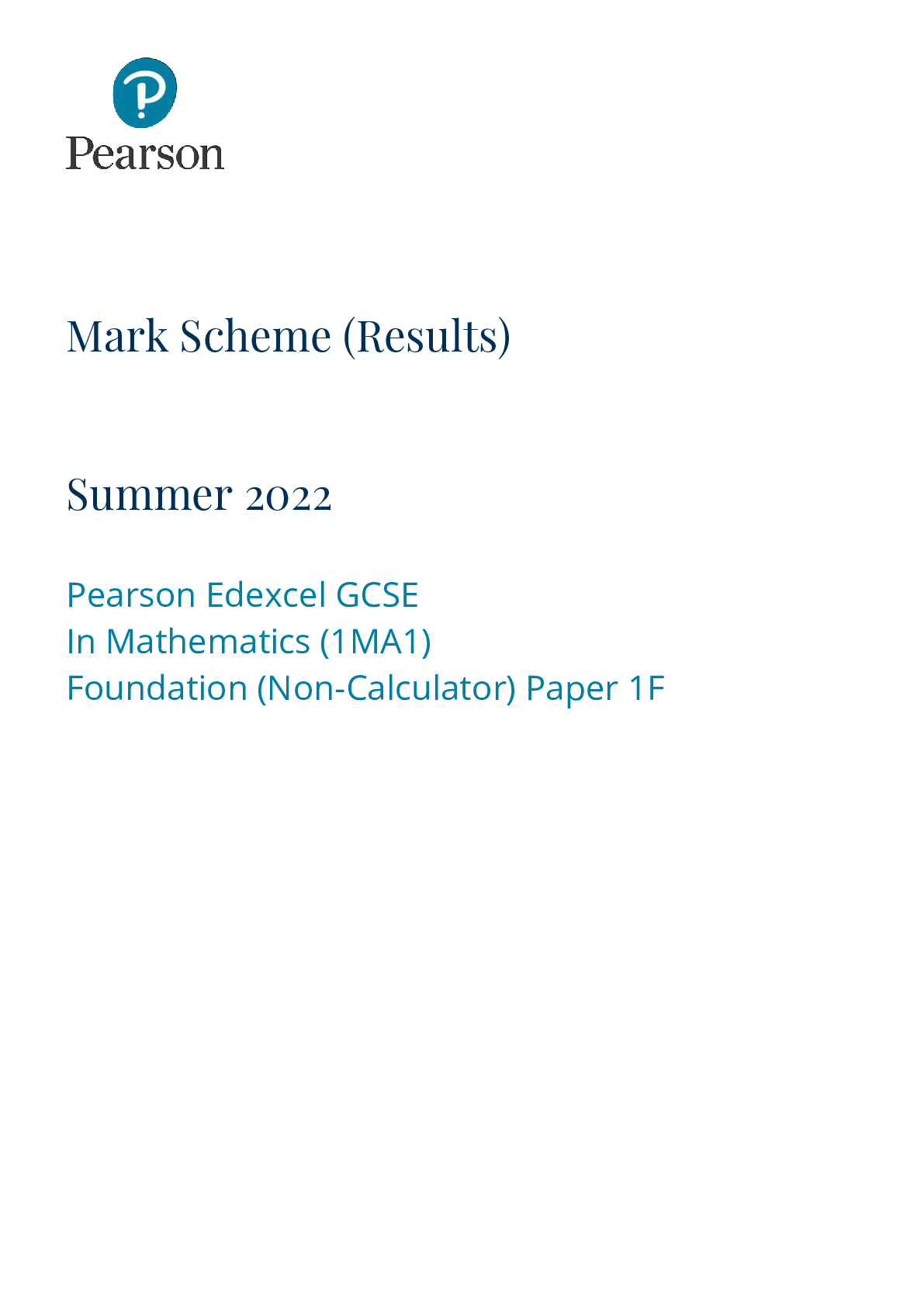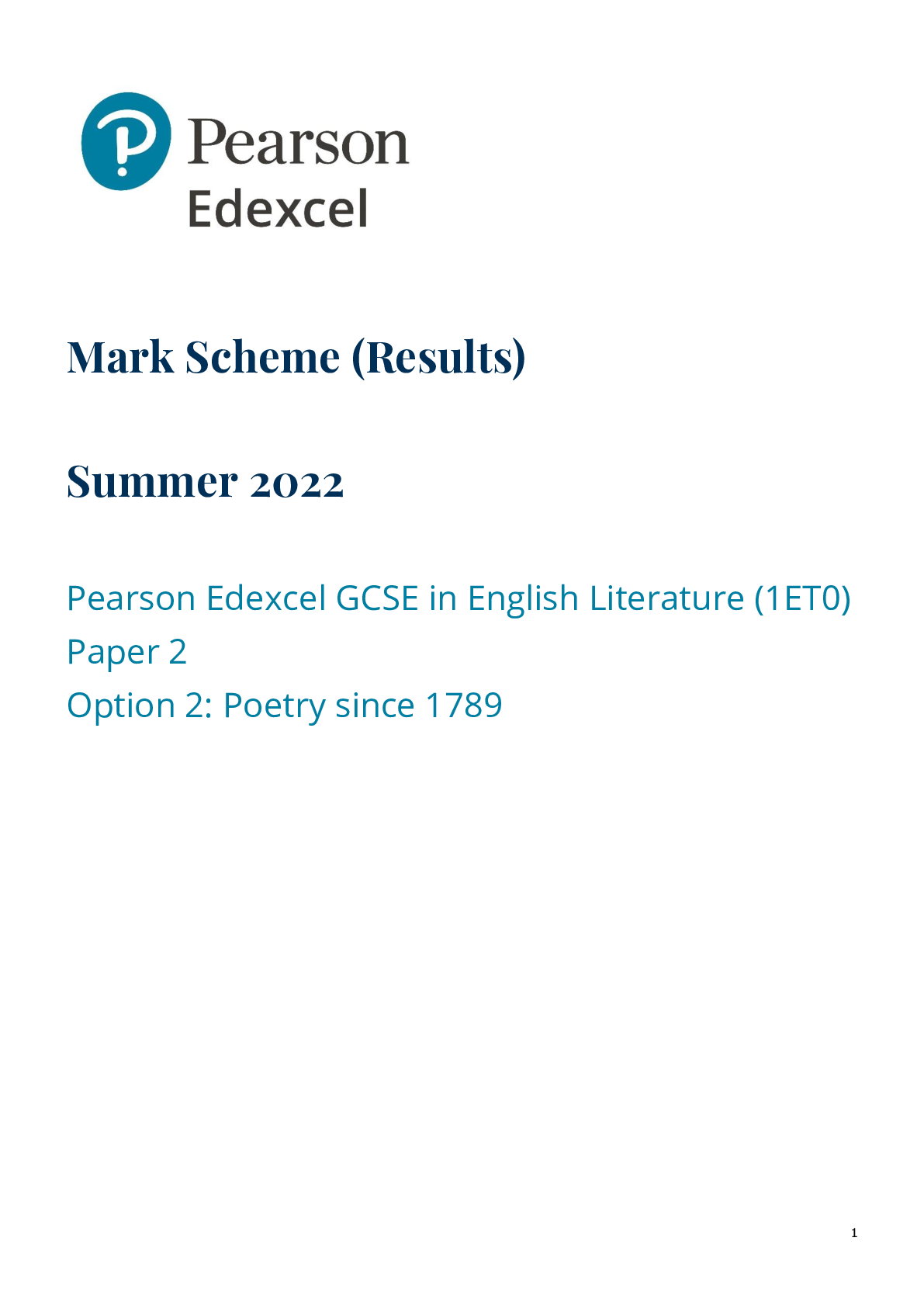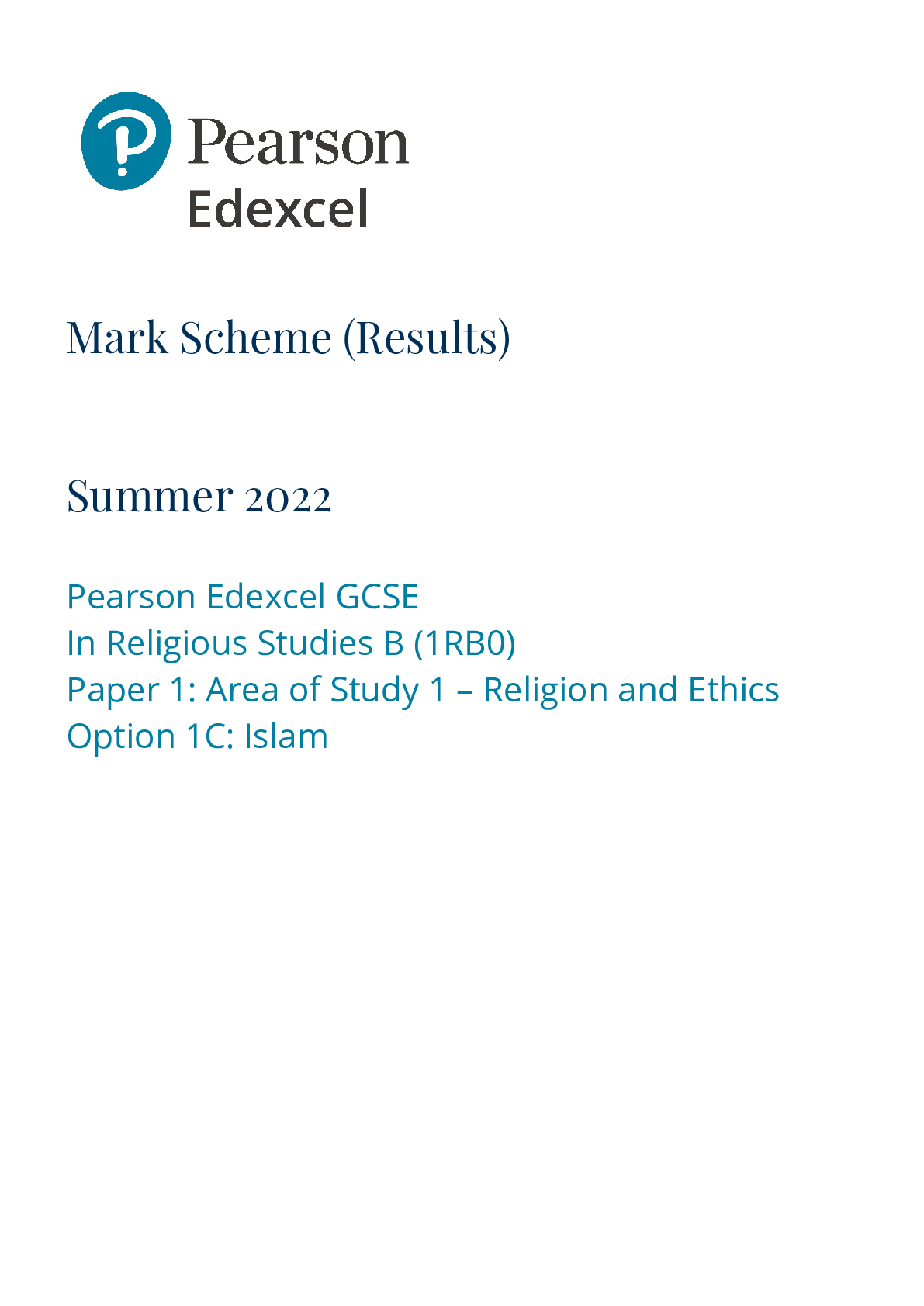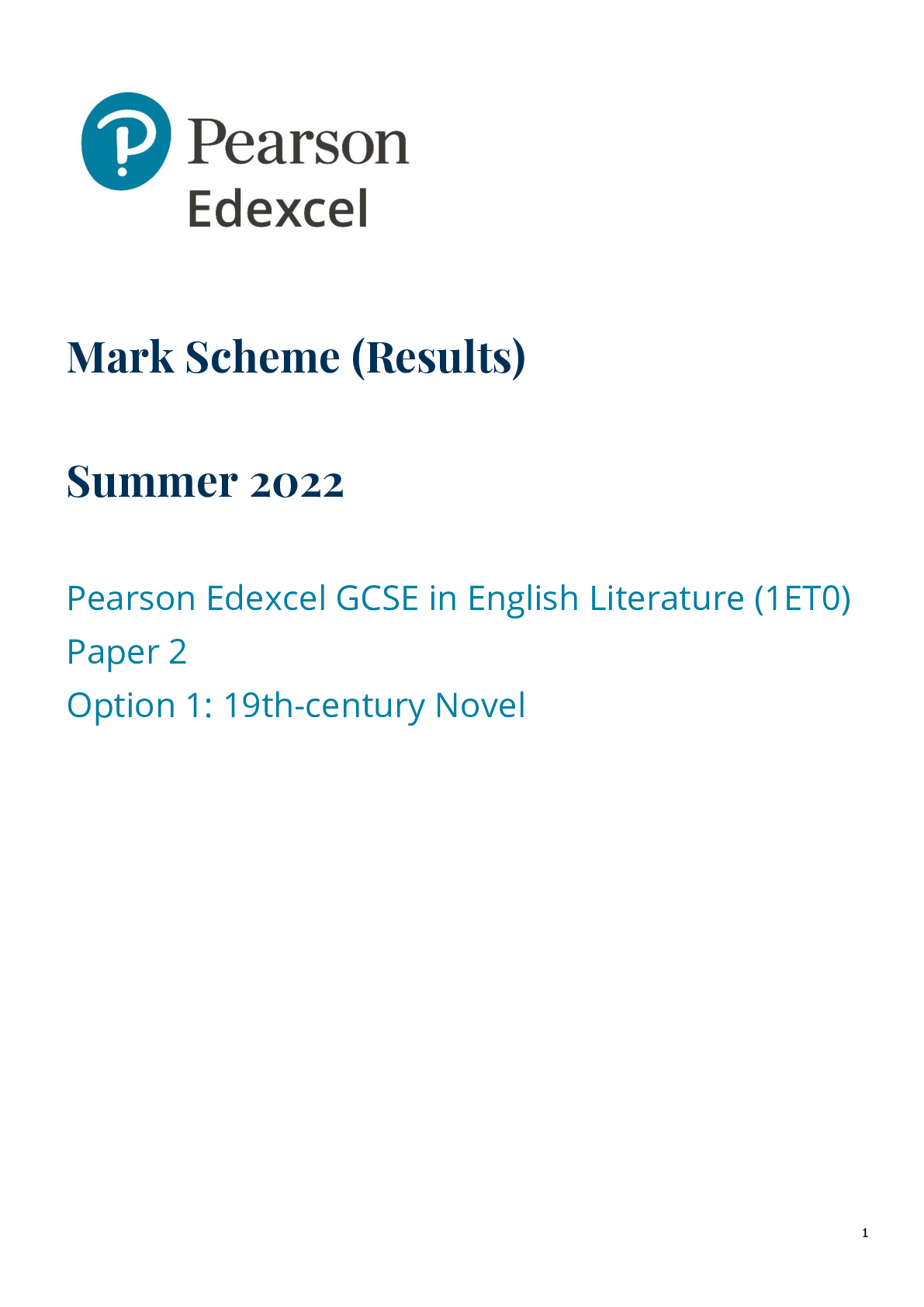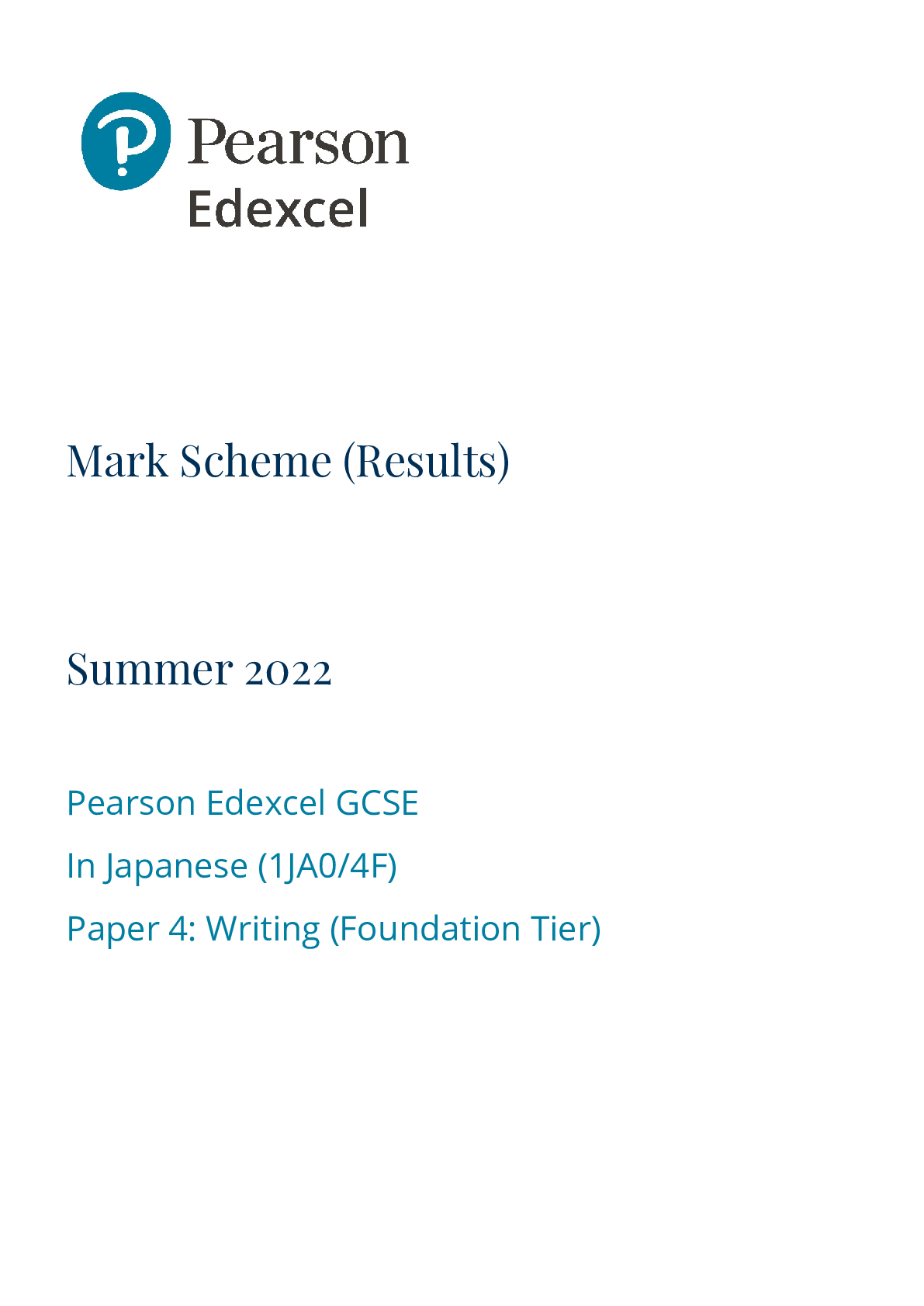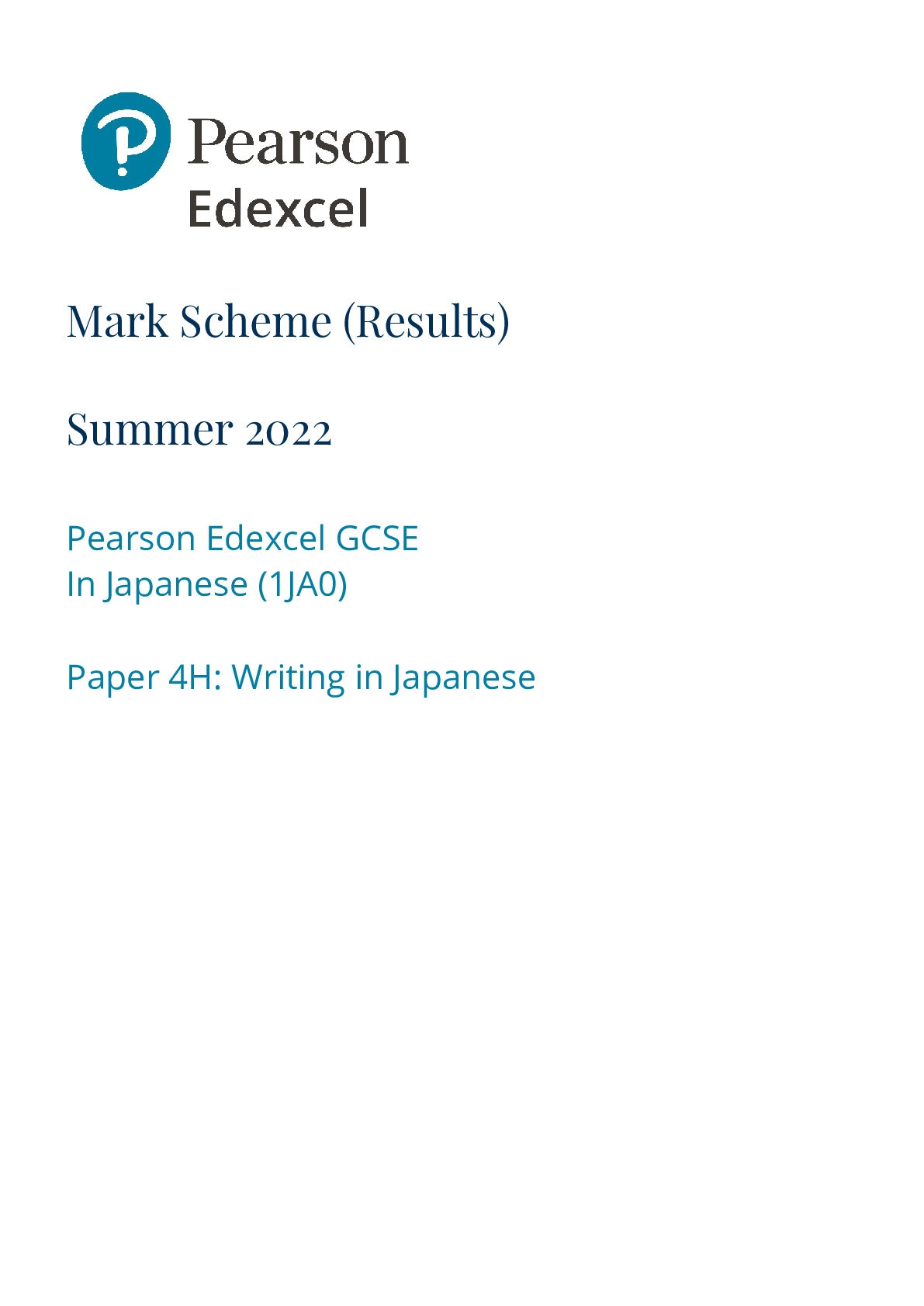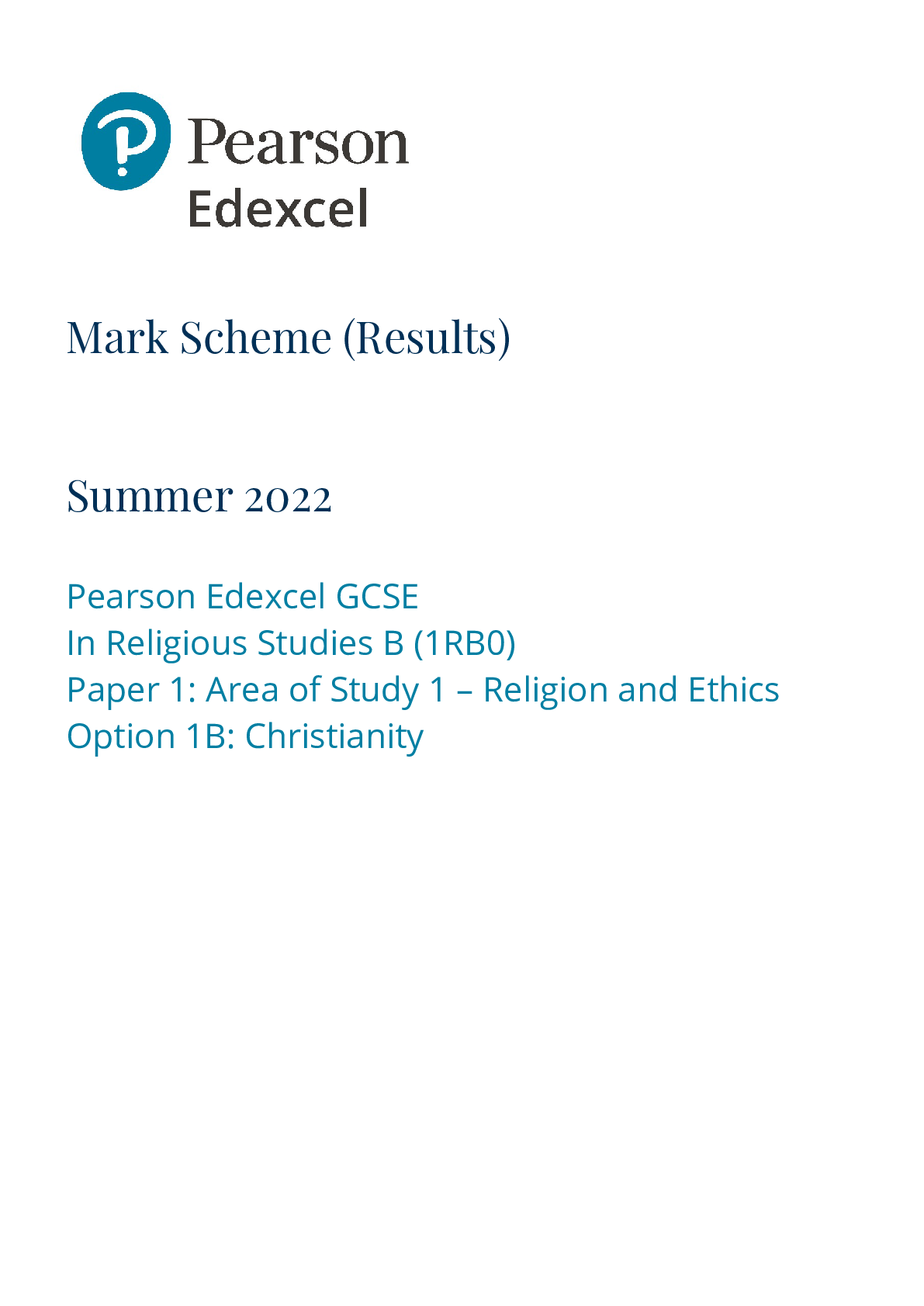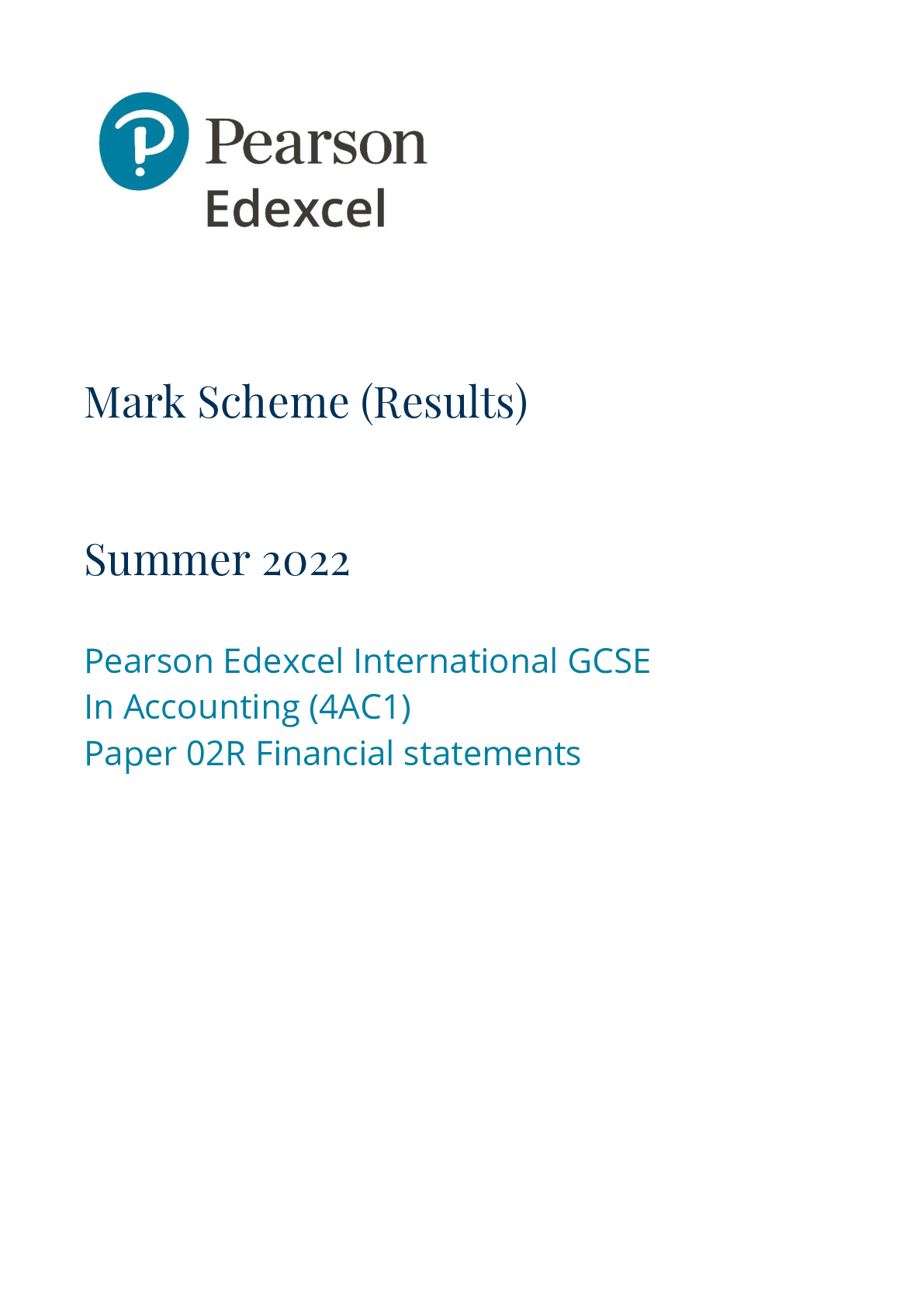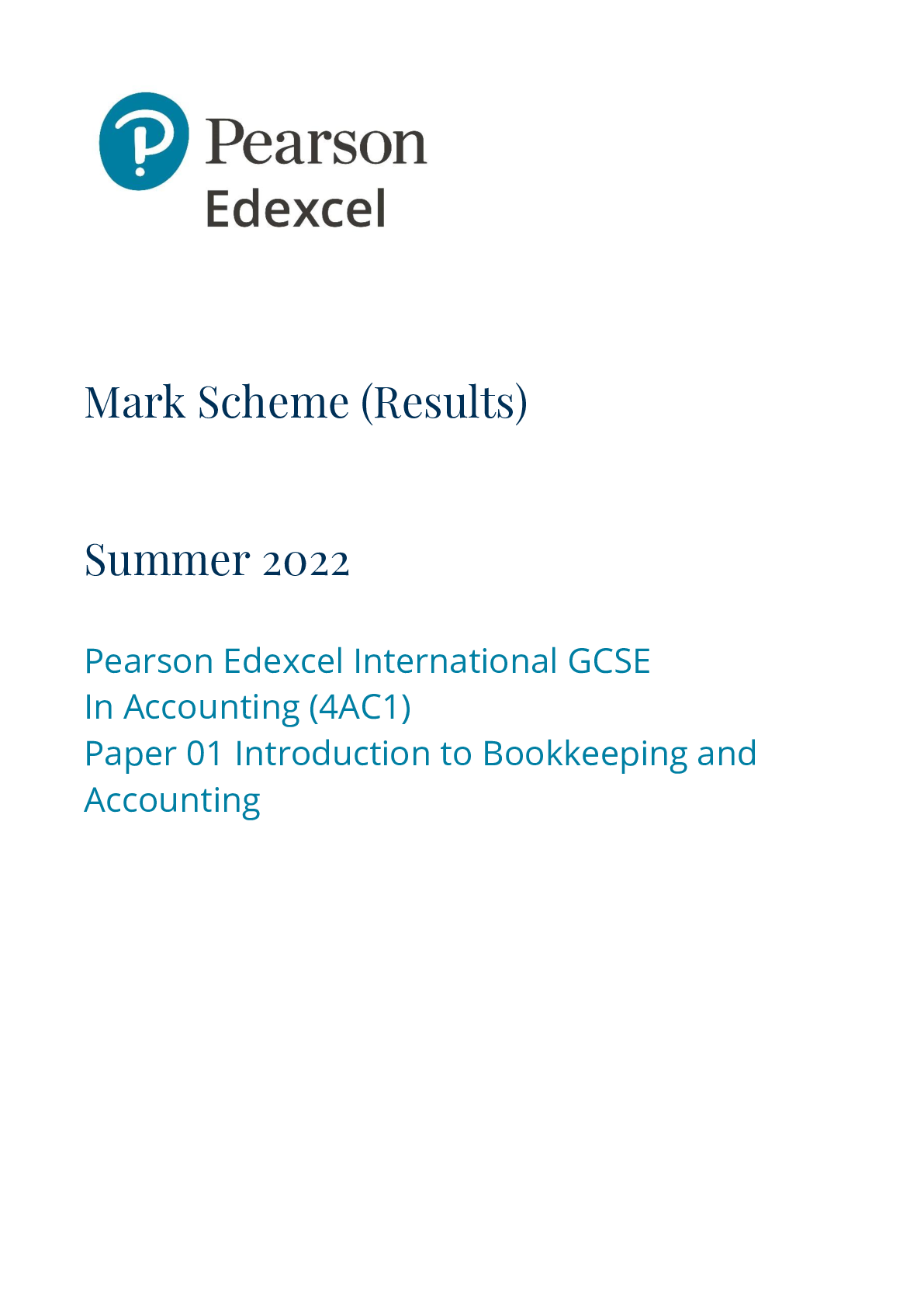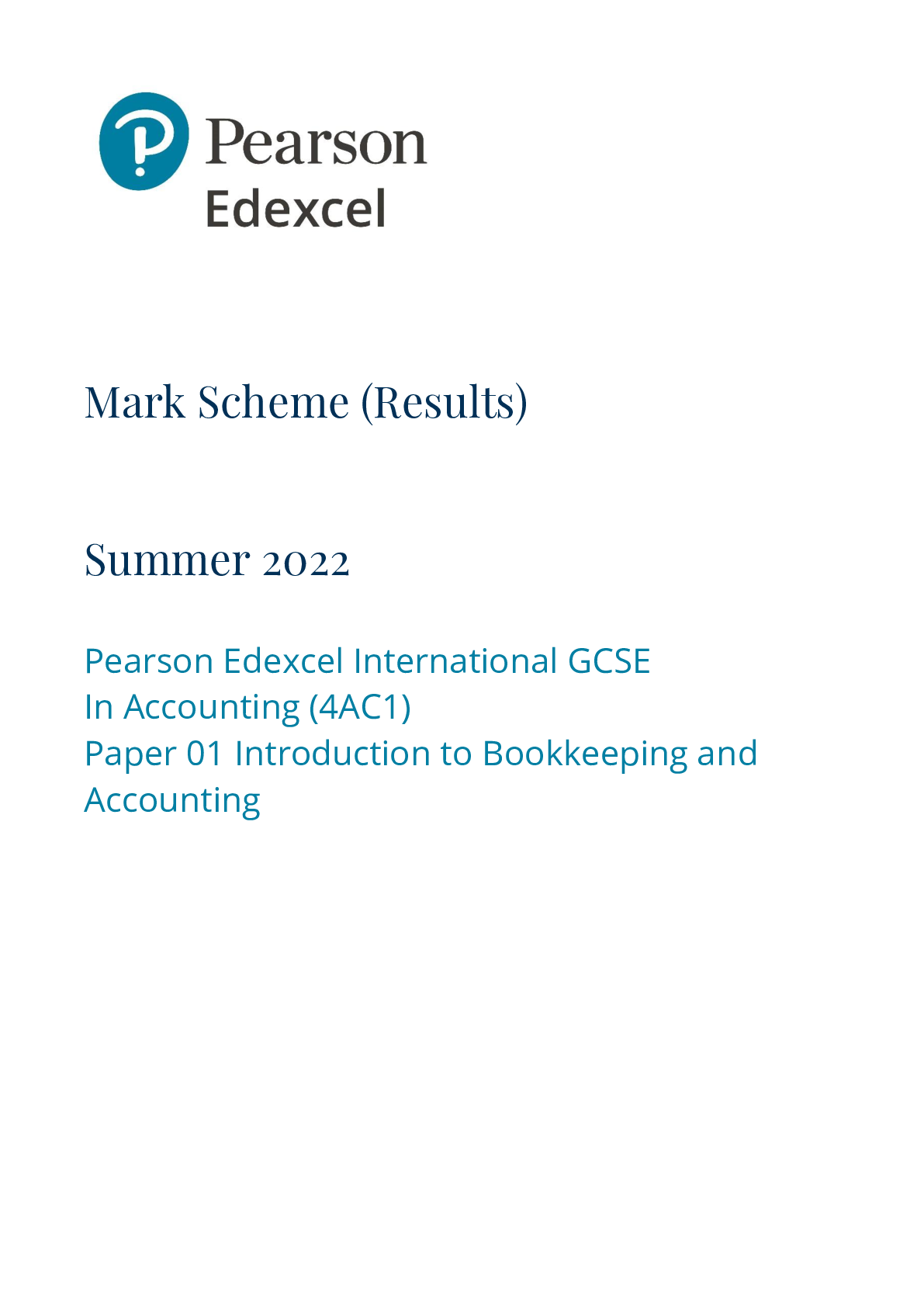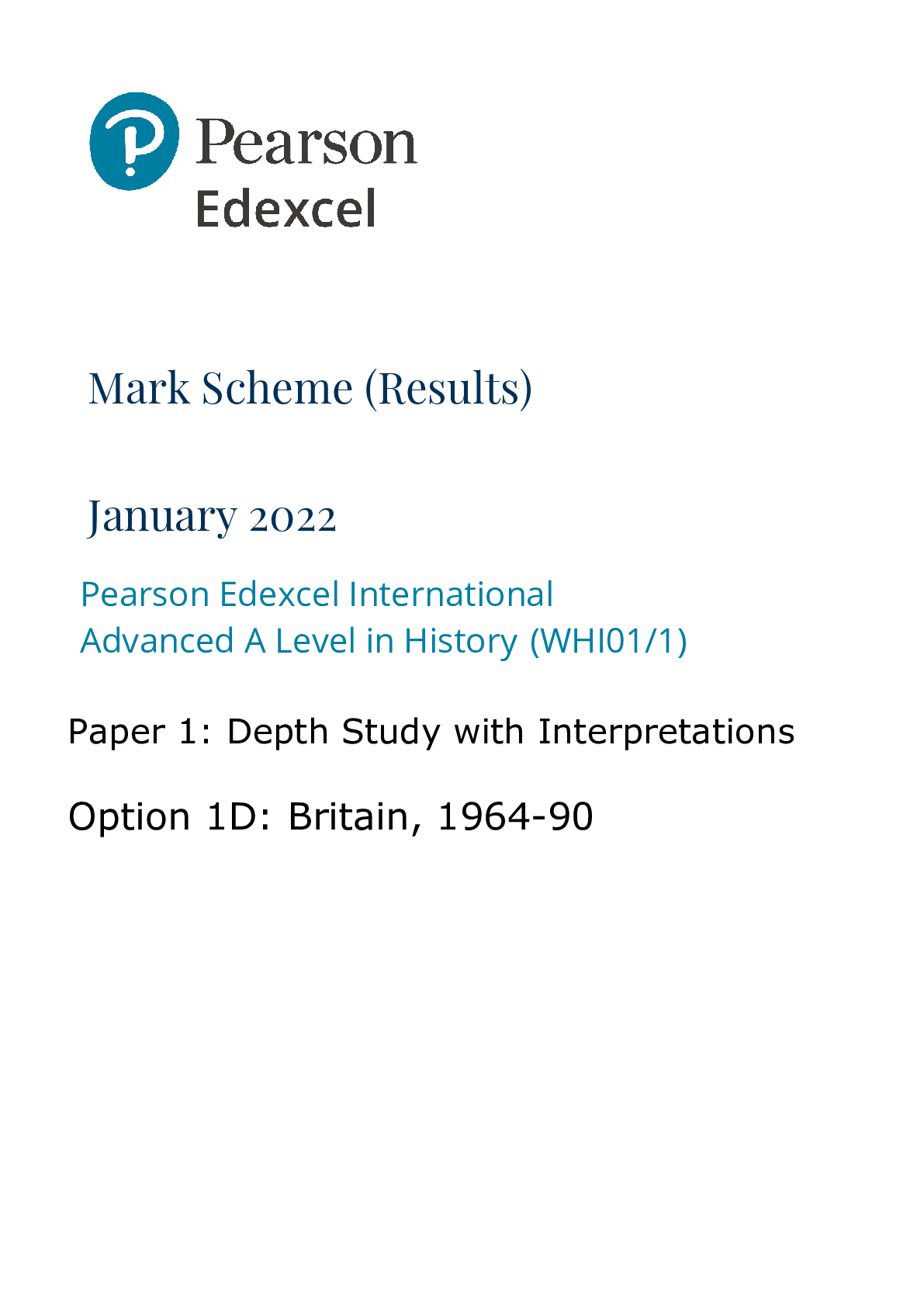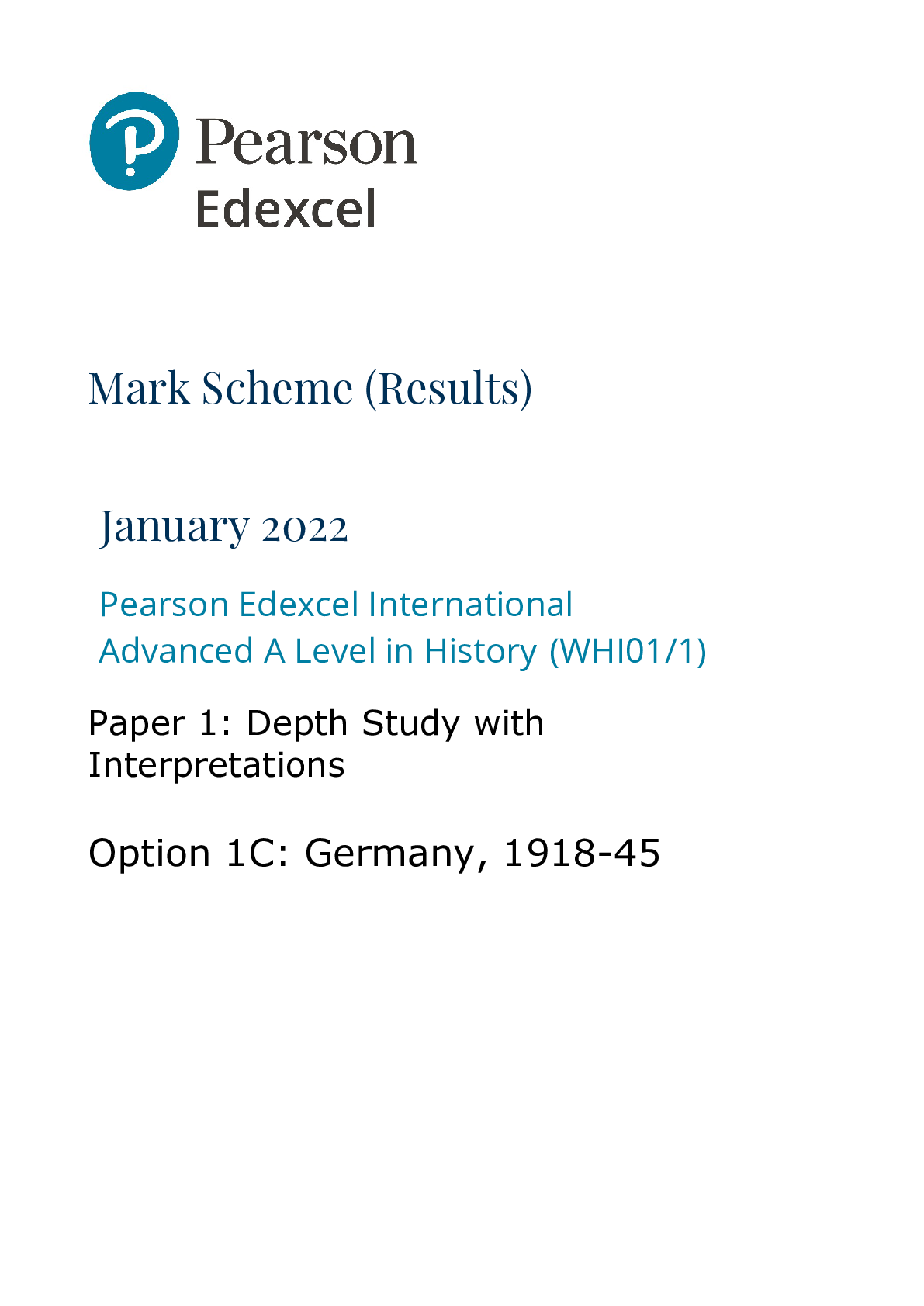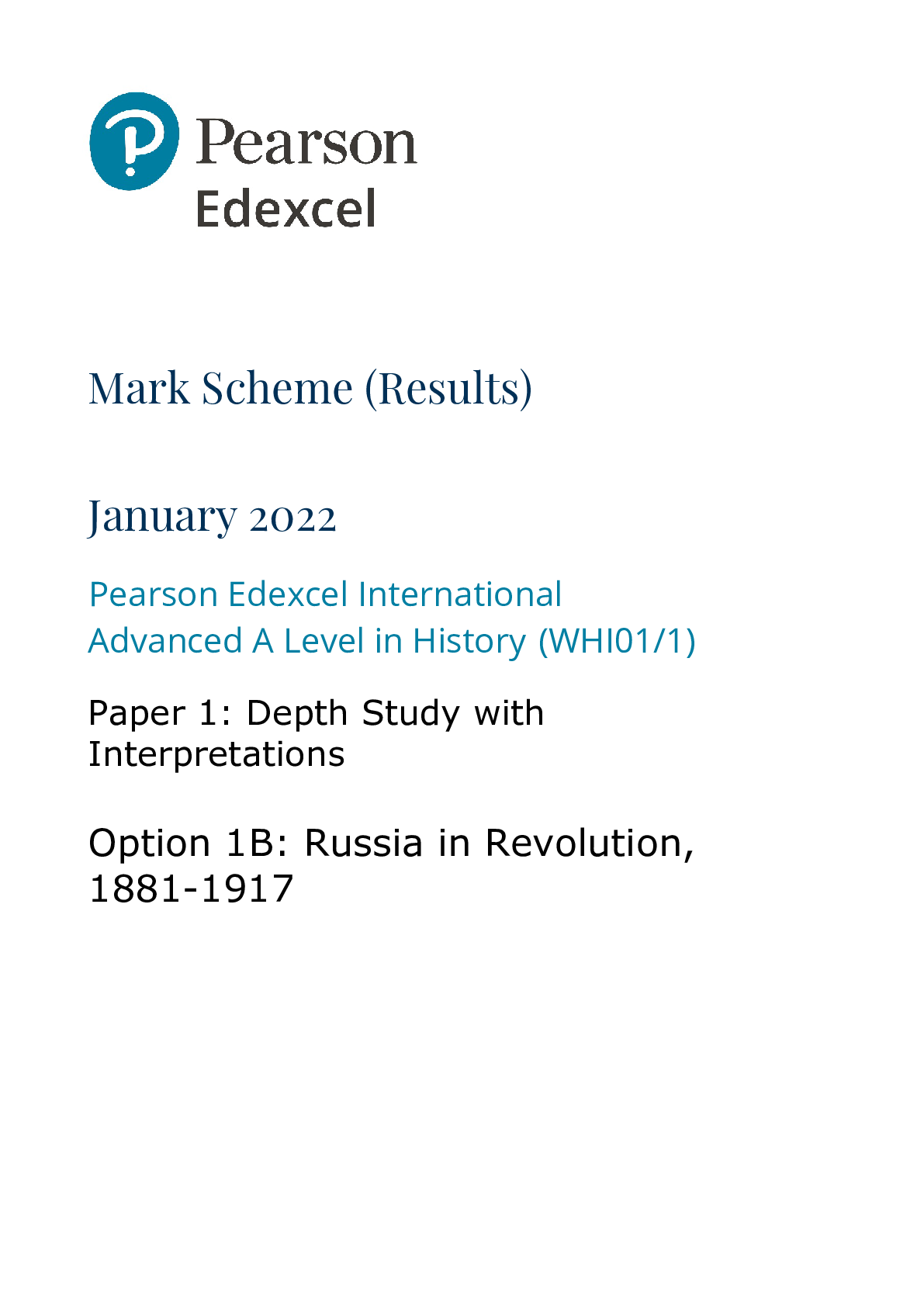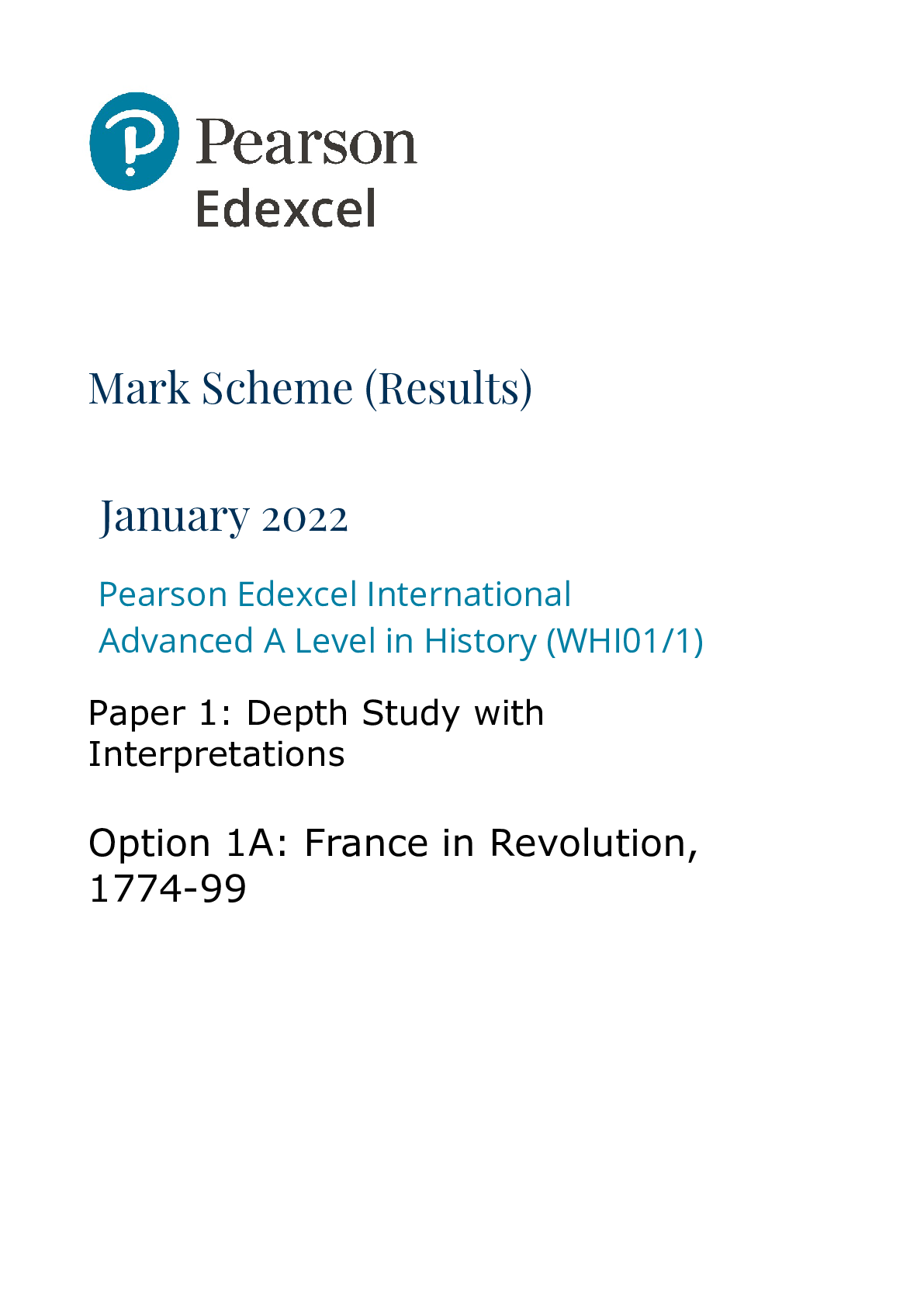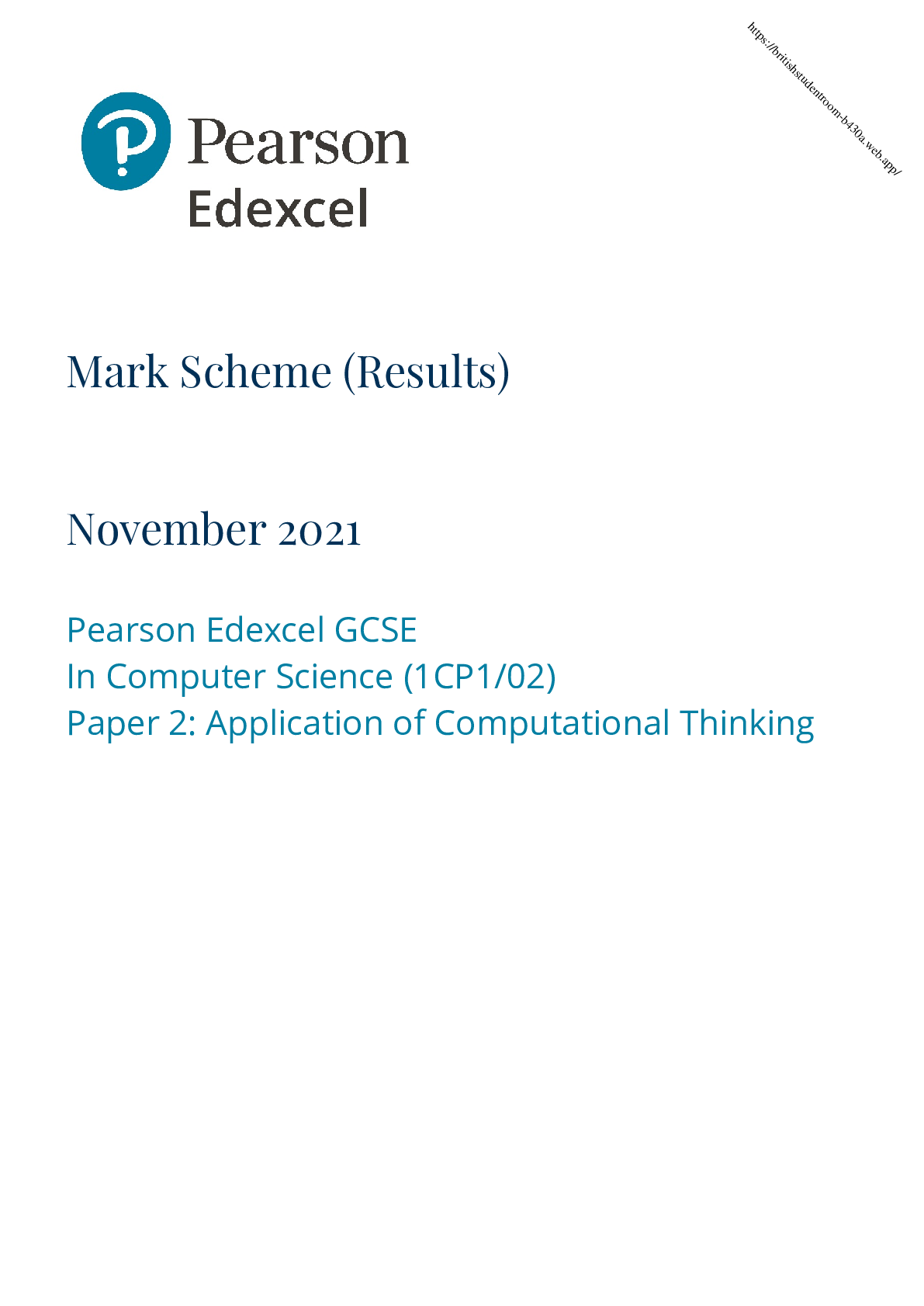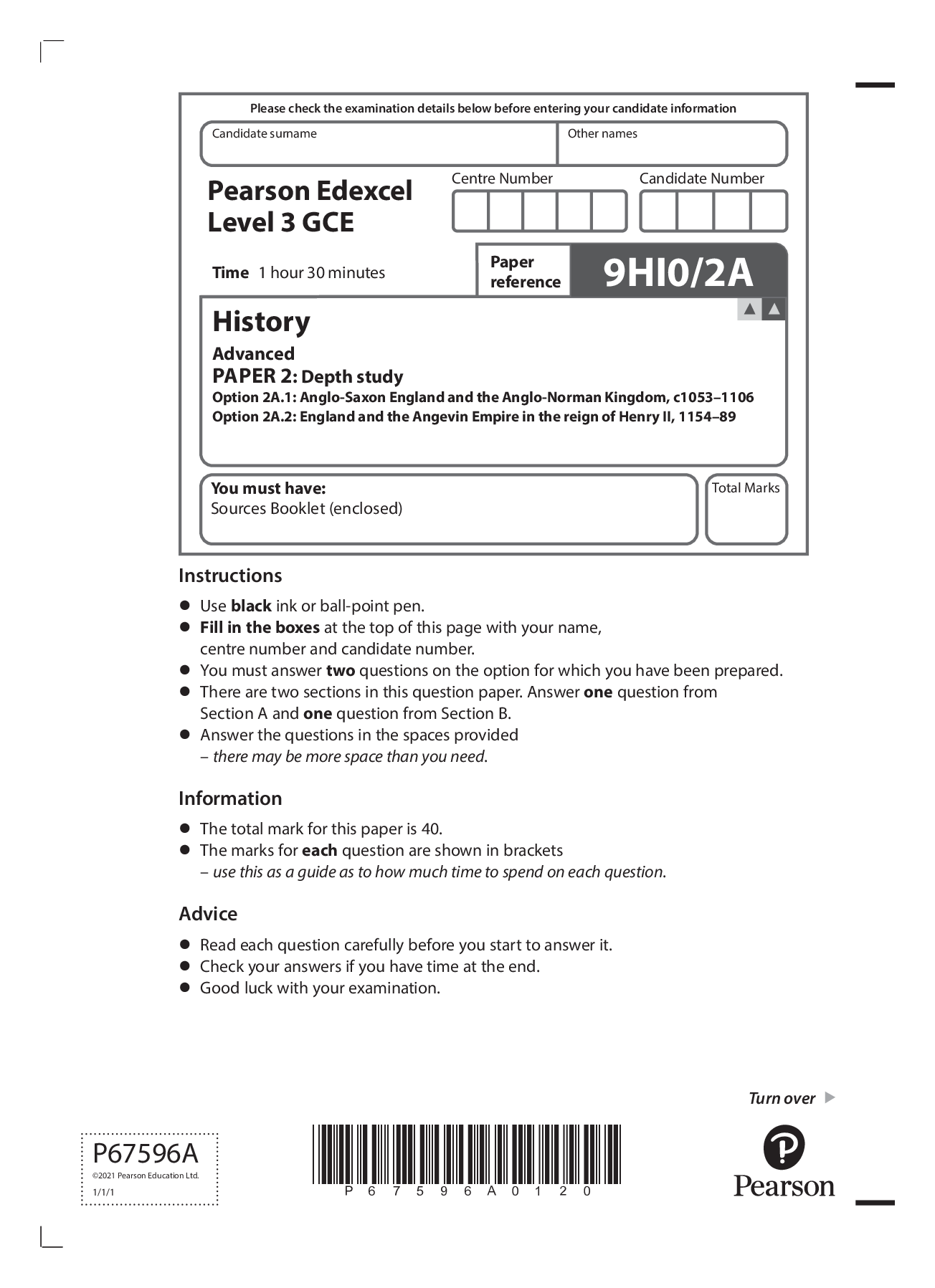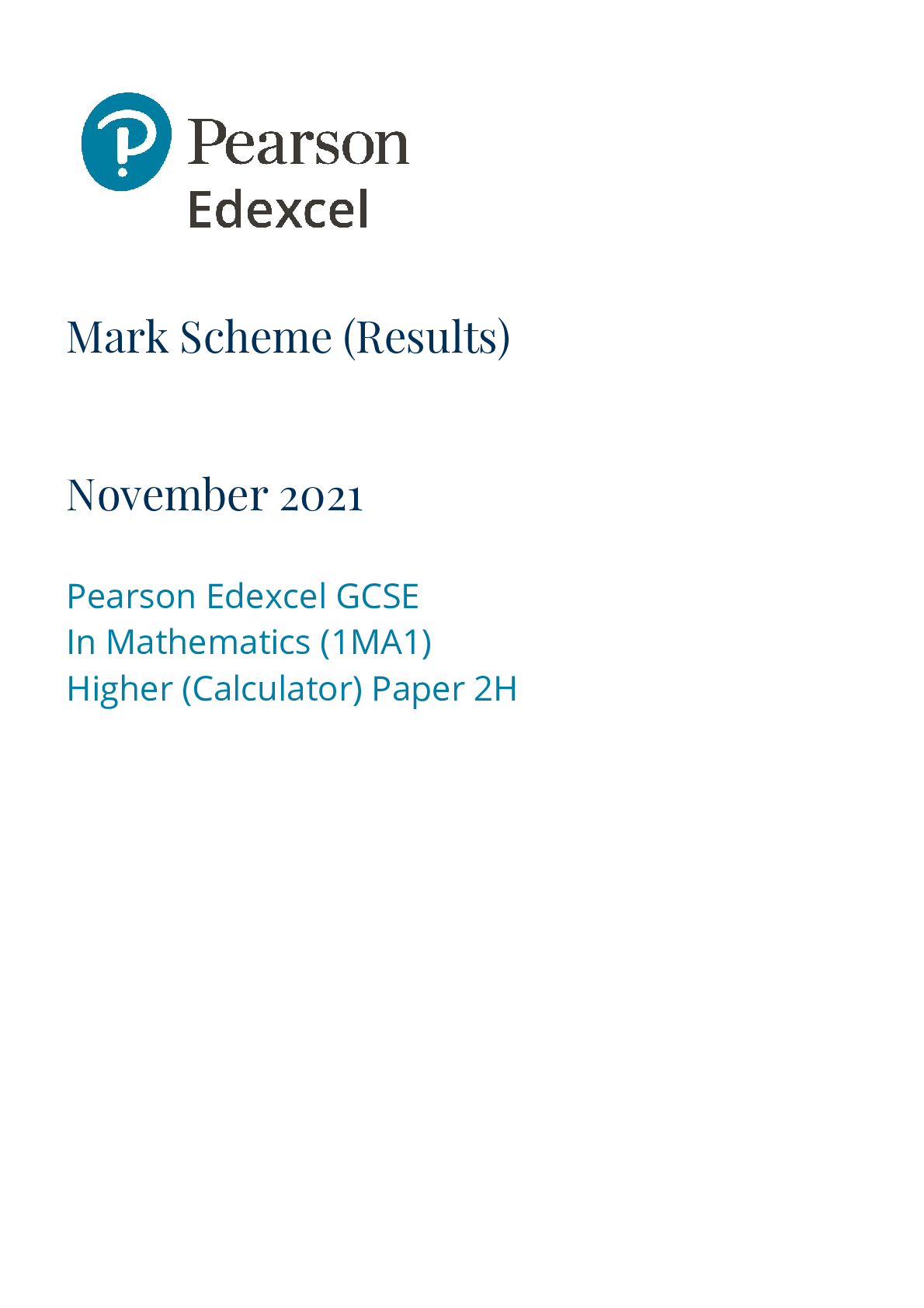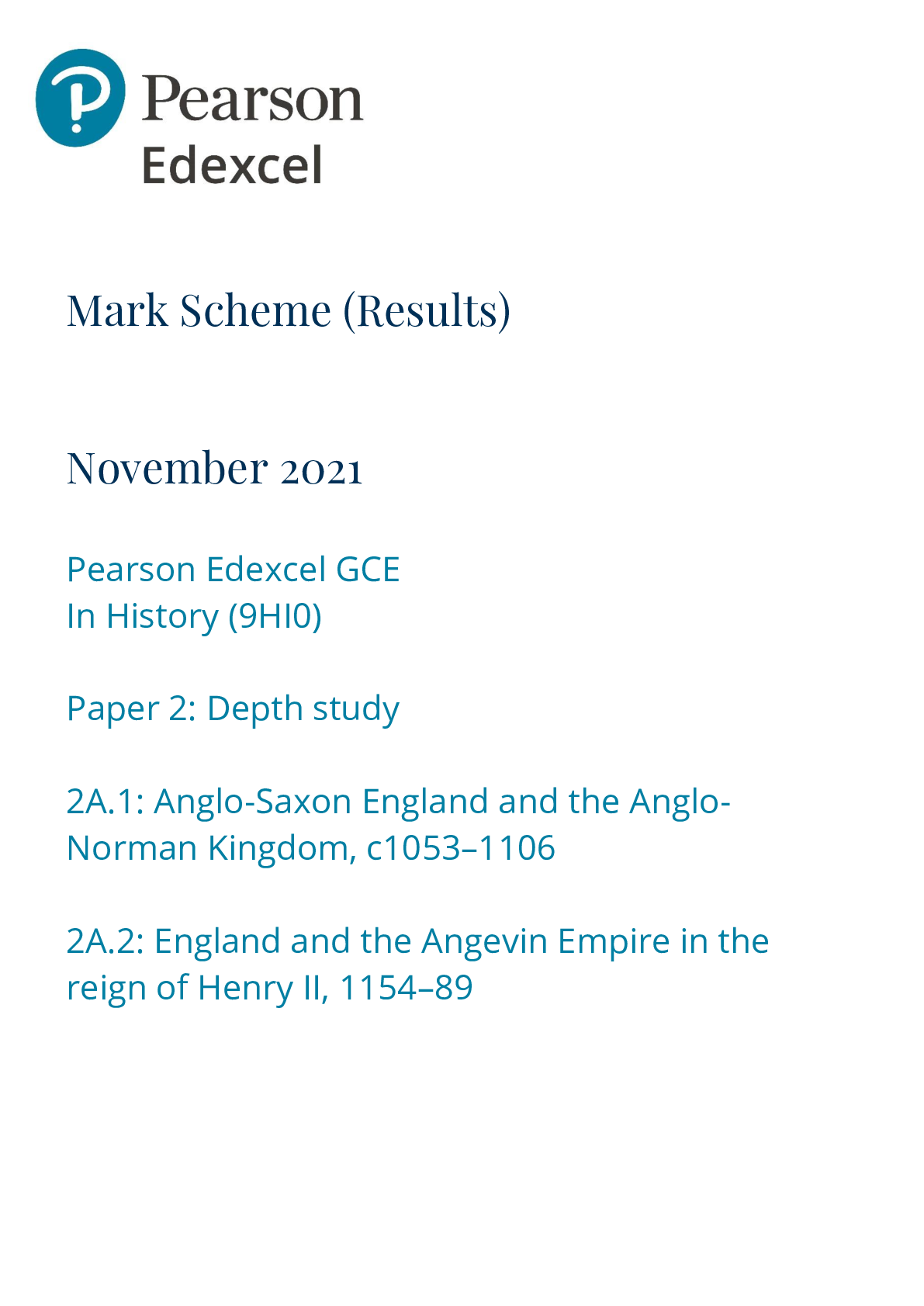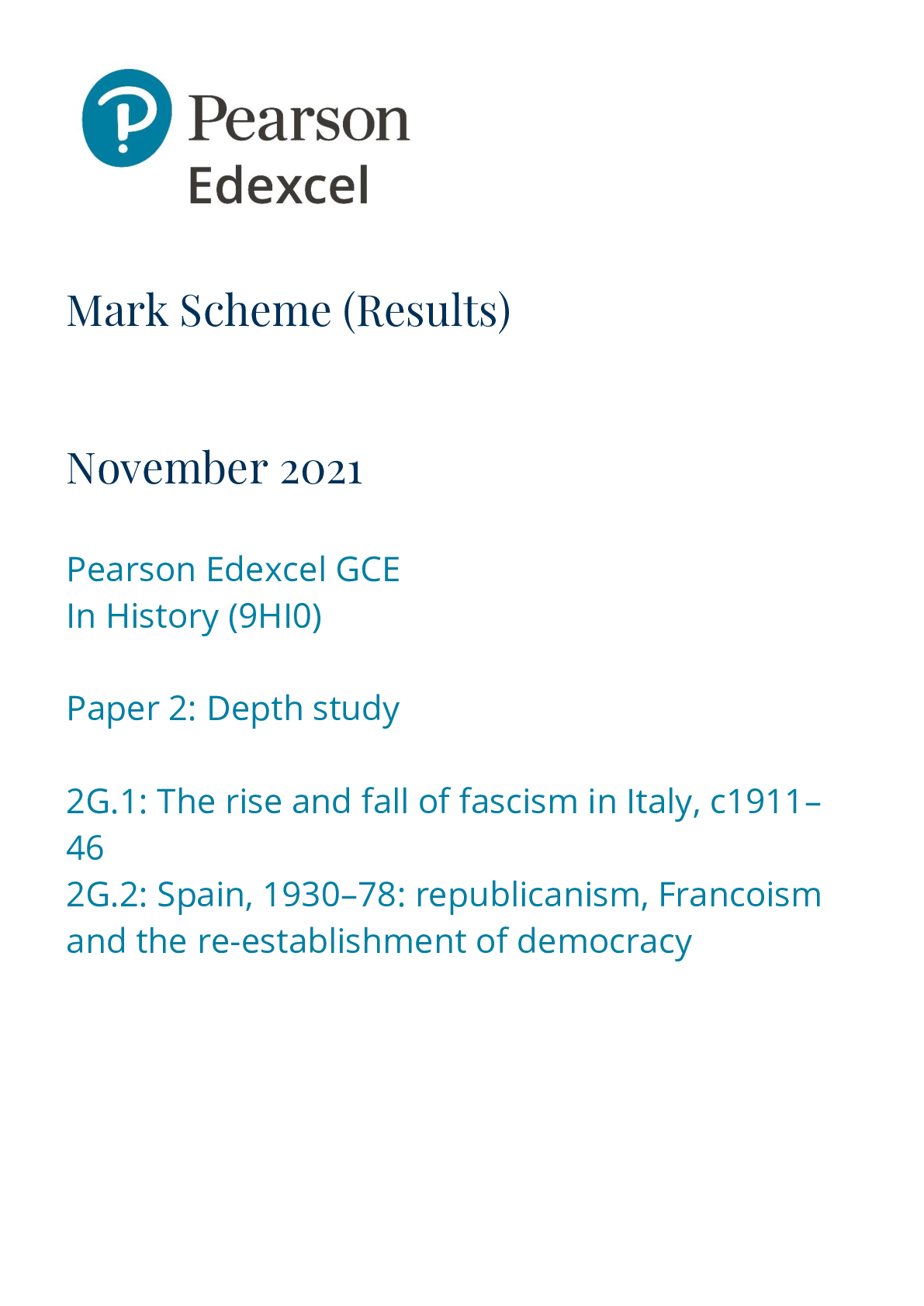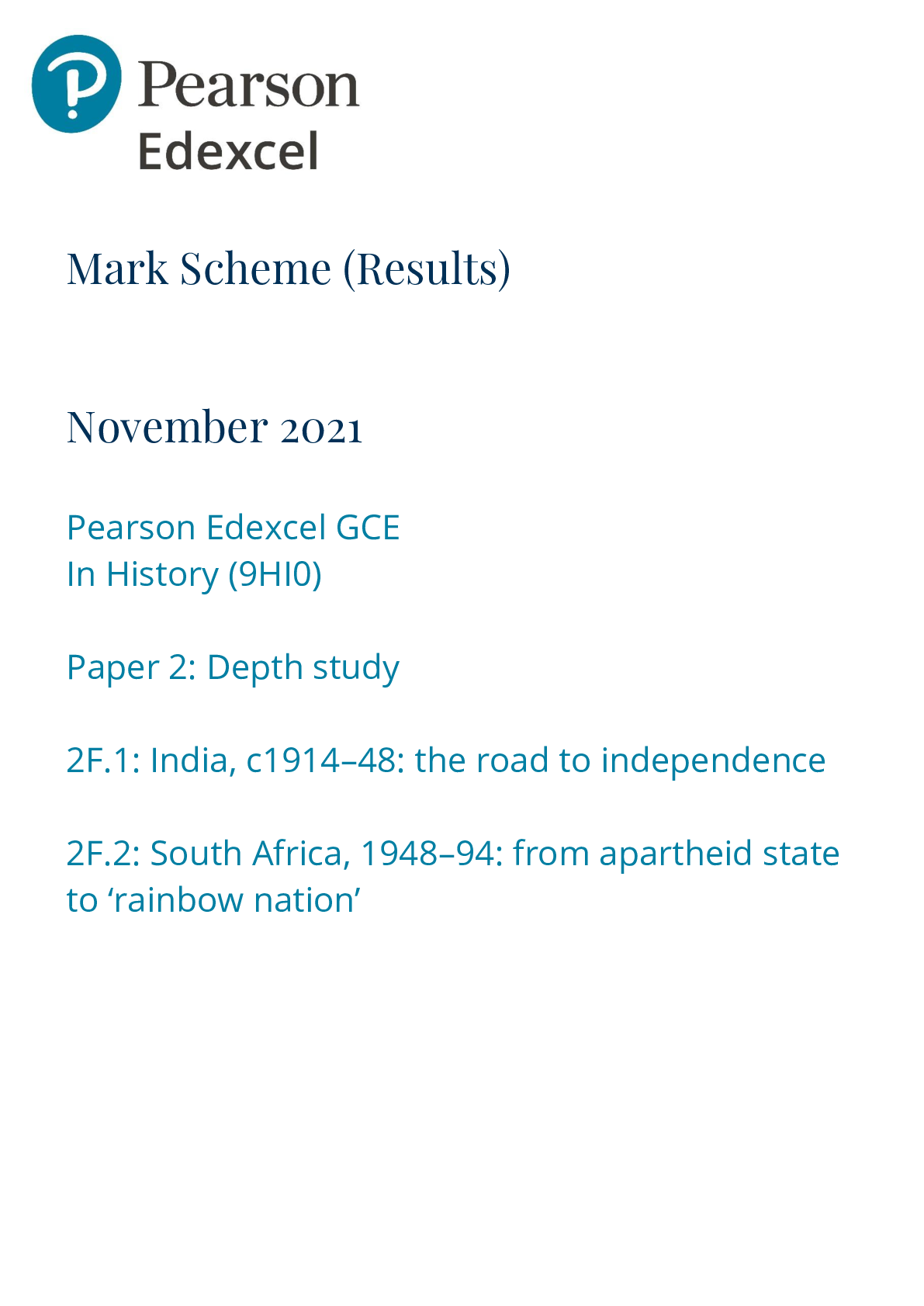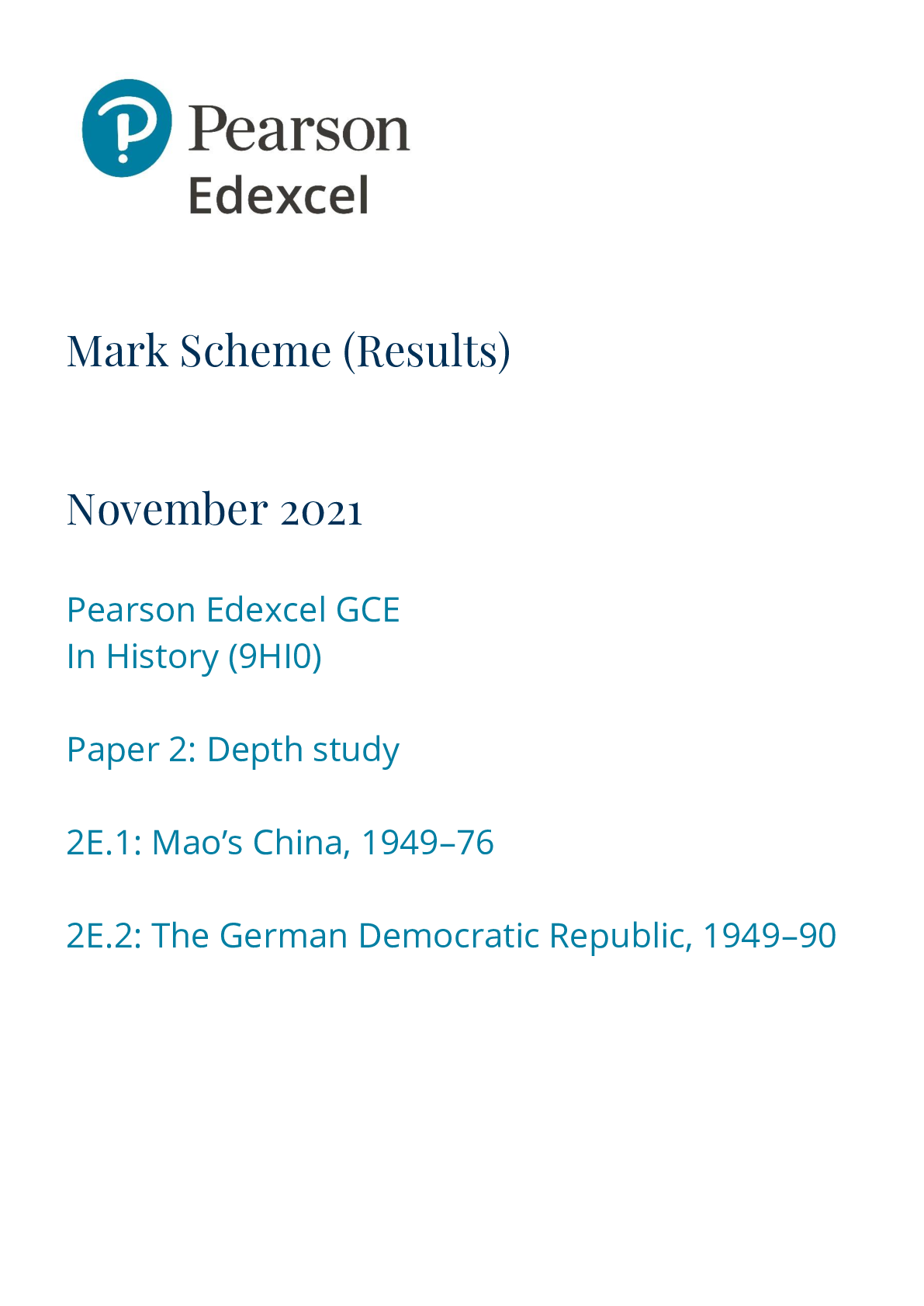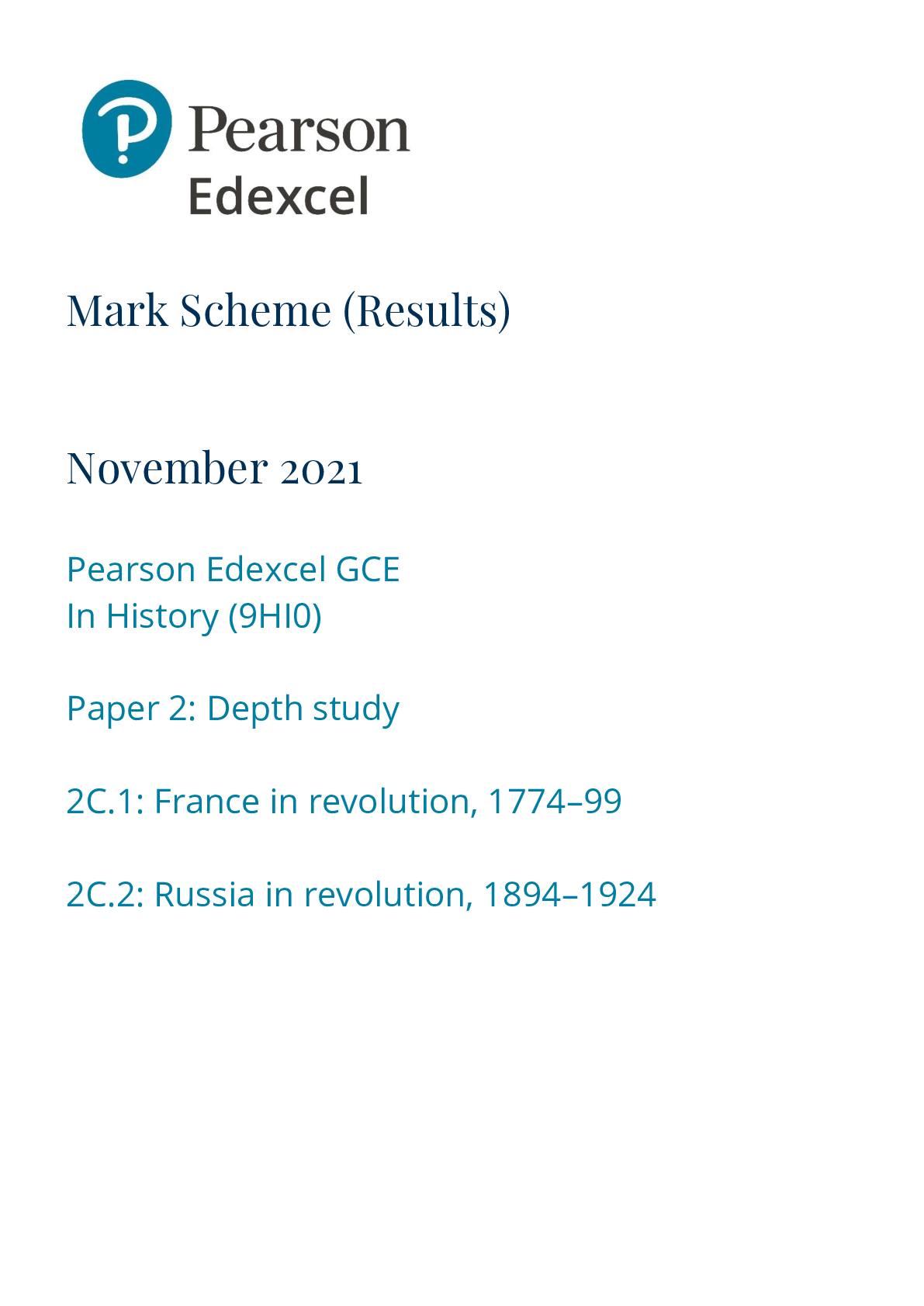History > MARK SCHEME > Mark Scheme (Results) Summer 2022 Pearson Edexcel GCSE In History (1HIA) Paper 3: Modern depth study (All)
Mark Scheme (Results) Summer 2022 Pearson Edexcel GCSE In History (1HIA) Paper 3: Modern depth study Option 33: The USA, 1954–75: conflict at home and abroad Edexcel and BTEC Qualifications
Document Content and Description Below
Mark Scheme (Results) Summer 2022 Pearson Edexcel GCSE In History (1HIA) Paper 3: Modern depth study Option 33: The USA, 1954–75: conflict at home and abroad Edexcel and BTEC Qualification... s Edexcel and BTEC qualifications are awarded by Pearson, the UK’s largest awarding body. We provide a wide range of qualifications including academic, vocational, occupational and specific programmes for employers. For further information visit our qualifications websites at www.edexcel.com or www.btec.co.uk. Alternatively, you can get in touch with us using the details on our contact us page at www.edexcel.com/contactus. Pearson: helping people progress, everywhere Pearson aspires to be the world’s leading learning company. Our aim is to help everyone progress in their lives through education. We believe in every kind of learning, for all kinds of people, wherever they are in the world. We’ve been involved in education for over 150 years, and by working across 70 countries, in 100 languages, we have built an international reputation for our commitment to high standards and raising achievement through innovation in education. Find out more about how we can help you and your students at: www.pearson.com/uk Summer 2022 Question Paper Log Number P68717A Publications Code 1HIA_33_2022_MS All the material in this publication is copyright © Pearson Education Ltd 2022 General Marking Guidance • All candidates must receive the same treatment. Examiners must mark the first candidate in exactly the same way as they mark the last. • Mark schemes should be applied positively. Candidates must be rewarded for what they have shown they can do rather than penalised for omissions. • Examiners should mark according to the mark scheme not according to their perception of where the grade boundaries may lie. • There is no ceiling on achievement. All marks on the mark scheme should be used appropriately. • All the marks on the mark scheme are designed to be awarded. Examiners should always award full marks if deserved, i.e. if the answer matches the mark scheme. Examiners should also be prepared to award zero marks if the candidate’s response is not worthy of credit according to the mark scheme. • Where some judgement is required, mark schemes will provide the principles by which marks will be awarded and exemplification may be limited. • When examiners are in doubt regarding the application of the mark scheme to a candidate’s response, the team leader must be consulted. • Crossed out work should be marked UNLESS the candidate has replaced it with an alternative response. How to award marks when level descriptions are used 1. Finding the right level The first stage is to decide which level the answer should be placed in. To do this, use a ‘best-fit’ approach, deciding which level most closely describes the quality of the answer. Answers can display characteristics from more than one level, and where this happens markers must use the guidance below and their professional judgement to decide which level is most appropriate. For example, one stronger passage at L4 would not by itself merit a L4 mark, but it might be evidence to support a high L3 mark, unless there are substantial weaknesses in other areas. Similarly, an answer that fits best in L3 but which has some characteristics of L2 might be placed at the bottom of L3. An answer displaying some characteristics of L3 and some of L1 might be placed in L2. 2. Finding a mark within a level After a level has been decided on, the next stage is to decide on the mark within the level. The instructions below tell you how to reward responses within a level. However, where a level has specific guidance about how to place an answer within a level, always follow that guidance. Levels containing two marks only Start with the presumption that the work will be at the top of the level. Move down to the lower mark if the work only just meets the requirements of the level. Levels containing three or more marks Markers should be prepared to use the full range of marks available in a level and not restrict marks to the middle. Markers should start at the middle of the level (or the upper-middle mark if there is an even number of marks) and then move the mark up or down to find the best mark. To do this, they should take into account how far the answer meets the requirements of the level: • If it meets the requirements fully, markers should be prepared to award full marks within the level. The top mark in the level is used for answers that are as good as can realistically be expected within that level • If it only barely meets the requirements of the level, markers should consider awarding marks at the bottom of the level. The bottom mark in the level is used for answers that are the weakest that can be expected within that level • The middle marks of the level are used for answers that have a reasonable match to the descriptor. This might represent a balance between some characteristics of the level that are fully met and others that are only barely met. Indicative content Examiners are reminded that indicative content is provided as an illustration to markers of some of the material that may be offered by students. It does not show required content and alternatives should be credited where valid. Modern depth study 33: The USA, 1954-75: conflict at home and abroad Question 1 Give two things you can infer from Source A about Search and Destroy missions in Vietnam. Target: Source analysis (making inferences). AO3: 4 marks. Marking instructions Award 1 mark for each valid inference up to a maximum of two inferences. The second mark for each example should be awarded for supporting detail selected from the source. e.g. • Search and Destroy missions were frightening for soldiers (1). ‘You didn’t know if your next step would be your last’ (1). • Search and Destroy missions were frustrating for American soldiers (1). A lot of the time was spent searching for the Vietcong’s hiding places (1). • Search and Destroy missions sometimes went out of control (1). Soldiers burned down houses when they weren’t supposed to (1). Accept other appropriate alternatives. Question 2 Explain why opposition in the USA to the Vietnam War increased in the years 1964-73. You may use the following in your answer: • My Lai Massacre, 1968 • Kent State University, 1970 You must also use information of your own. Target: Analysis of second order concepts: causation [AO2]; Knowledge and understanding of features and characteristics [AO1]. AO2: 6 marks. AO1: 6 marks. Level Mark Descriptor 0 No rewardable material. 1 1–3 • A simple or generalised answer is given, lacking development and organisation. [AO2] • Limited knowledge and understanding of the topic is shown. [AO1] 2 4–6 • An explanation is given, showing limited analysis and with implicit or unsustained links to the conceptual focus of the question. It shows some development and organisation of material, but a line of reasoning is not sustained. [AO2] • Accurate and relevant information is included, showing some knowledge and understanding of the period. [AO1] Maximum 5 marks for Level 2 answers that do not go beyond aspects prompted by the stimulus points. 3 7–9 • An explanation is given, showing some analysis, which is mainly directed at the conceptual focus of the question. It shows a line of reasoning that is generally sustained, although some passages may lack coherence and organisation. [AO2] • Accurate and relevant information is included, showing good knowledge and understanding of the required features or characteristics of the period studied. [AO1] Maximum 8 marks for Level 3 answers that do not go beyond aspects prompted by the stimulus points. 4 10–12 • An analytical explanation is given which is directed consistently at the conceptual focus of the question, showing a line of reasoning that is coherent, sustained and logically structured. [AO2] • Accurate and relevant information is precisely selected to address the question directly, showing wide-ranging knowledge and understanding of the required features or characteristics of the perio [Show More]
Last updated: 1 year ago
Preview 1 out of 13 pages
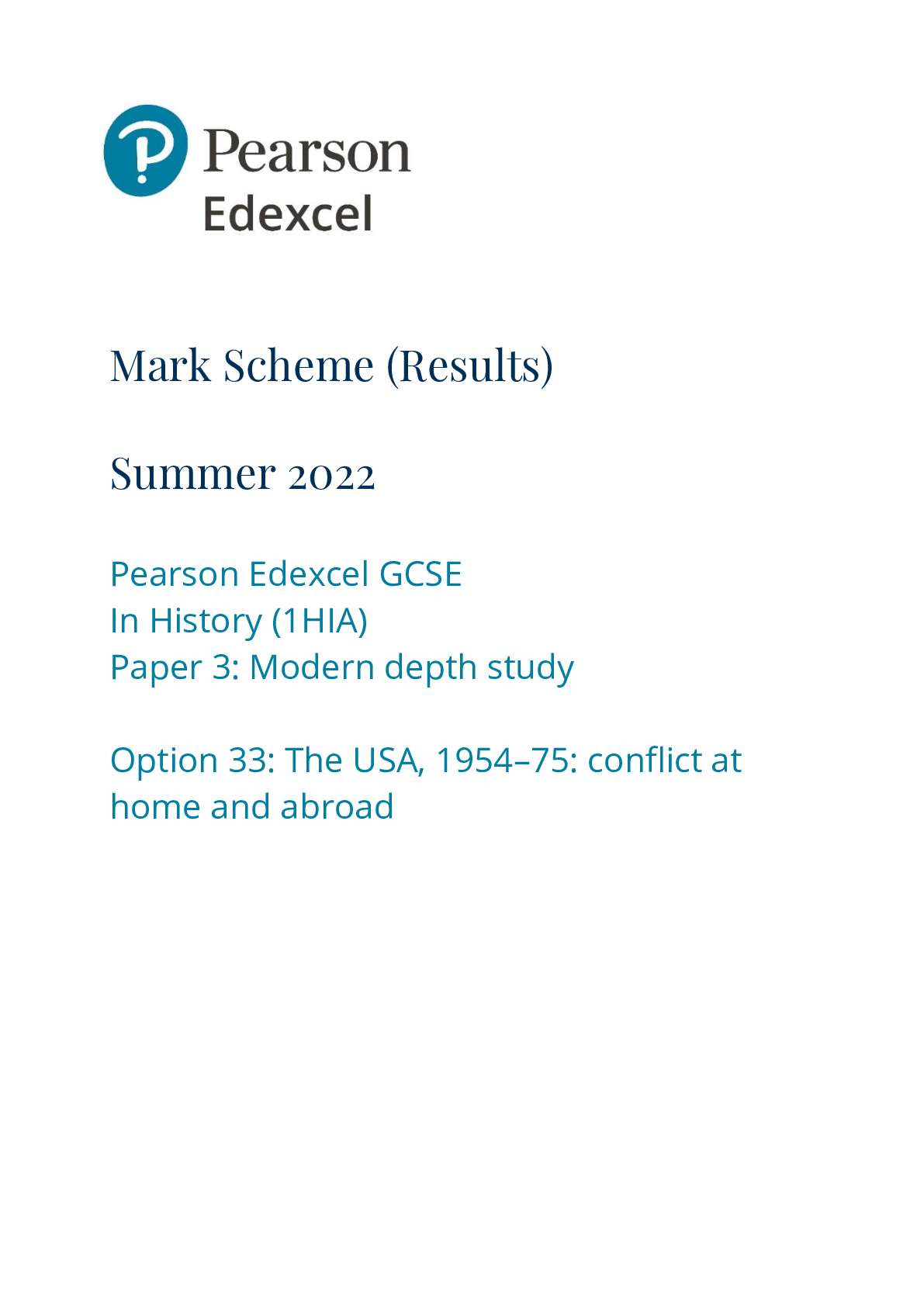
Reviews( 0 )
Document information
Connected school, study & course
About the document
Uploaded On
Apr 04, 2023
Number of pages
13
Written in
Additional information
This document has been written for:
Uploaded
Apr 04, 2023
Downloads
0
Views
70

